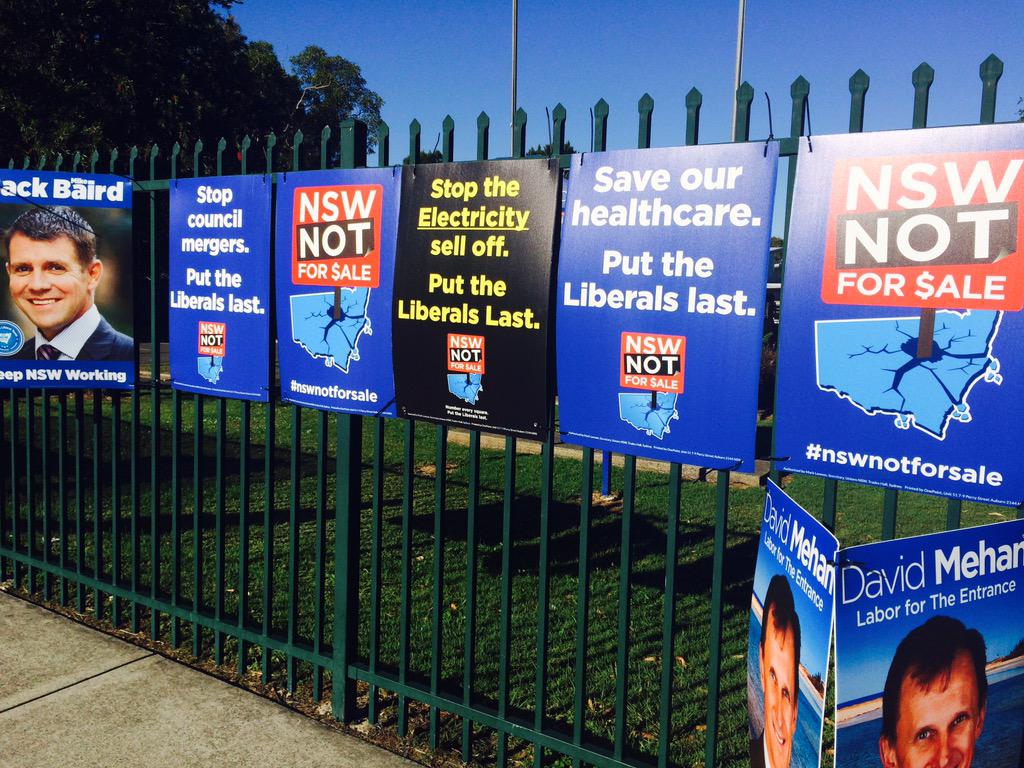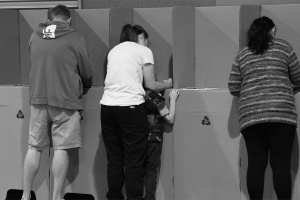New South Wales will vote tomorrow for its 56th Parliament. On the eve of the election, the NSW Electoral Commissioner, Colin Barry has reminded electors that it is easy to find out where to vote.
“On Saturday, electors should vote close to home but can vote at any one of the approximately 2,800 polling places located across New South Wales. Polling places will be open from 8.00am and close at 6.00pm sharp.”
Polling places are frequently busy in the morning. Electors who wish to avoid queues or who would like to take more time with their voting are encouraged to visit polling places after 2.00 pm when they are less busy”.
Polling place locations are available by visiting the website or calling on 1300 135 736.
Voters can print out your personalised elector brochure after confirming their details and listing the candidates and polling places for their district. Voters should also take the personalised brochures to the polling place as it will make finding names on the electoral roll easier.
 Results will be published on the website from 7pm on election night.
Results will be published on the website from 7pm on election night.
Voting is compulsory for all enrolled electors. The fine for not voting is $55.
The NSW election is on Saturday. Here is a guide to the ins and outs of voting on election day.
Where’s my nearest polling place and when will it be open?
Polling places are open between 8am and 6pm on Saturday, March 28. To find your closest polling place, you’ll need to know your electorate.
What if I’m outside my electorate on election day?
If you’ll be in NSW, you can vote at a polling place in another electorate by casting an “absentee vote”. Voting officials will assist you with this on the day.
If you’re going to be outside NSW on the day, you will need to vote via the iVote system or at a pre-polling venue (see below). Unlike previous elections, there will not be polling booths at airport terminals or in overseas embassies.
What if I can’t attend a polling place on the day?
Postal voting registrations have closed, so your two remaining options are pre-polling or using the iVote system.
Pre-polling means attending a pre-polling venue and filling out your ballot papers prior to election day. Friday, March 27 is your last chance for this. People eligible for pre-polling include those who will be out of NSW or further than eight kilometres from a polling place on election day and people whose religious beliefs, disability, care responsibilities or work requirements prevent them attending a polling place on Saturday.
iVote is a system whereby voting is done over the phone or on the internet. Registration to use iVote closes at 1pm on election day, and votes must be cast by 6pm that day. People eligible for iVote include those with a disability, visual impairment or illness that precludes them attending a polling place, and people who will be outside NSW or more than 20km away from a polling place on Saturday.
Election officials will visit hospitals and aged-care facilities in the days leading up to the election to ensure patients and residents (but not employees) can cast a vote.
Am I eligible to vote?
All Australian citizens 18 years or over who live in NSW must vote. Permanent residents are not eligible to vote unless they were enrolled to vote in Australia, as a British subject, prior to 1984. You needed to register to be included on the electoral roll by Saturday March 7. Check your enrolment status here.
If you’re not enrolled, don’t stress – read on for information on how you can vote.
What if I’ve forgotten to enrol or my address is wrong?
You can still vote on Saturday at a polling place by casting a “provisional vote”. You will need to show a NSW driver’s licence or NSW photo card with your current residential address, and people who were not born in Australia will need to provide a citizenship certificate number or Australian passport number. An election official will assist you with this process.
What’s the deal with the two different ballot papers?
If your knowledge of the NSW parliamentary system is based on hazy memories from primary school, this section is for you. The NSW parliament has two houses – the lower house, or Legislative Assembly, and the upper house, or Legislative Council. The party (or coalition) with the majority of seats in the Legislative Assembly forms the government of the day and the leader of that party becomes the Premier. The upper house serves as a house of review with regard to the passing of new laws and advises the government on public policy.
One ballot form casts your vote for the Legislative Assembly and the other (larger) ballot paper casts your vote for the Legislative Council. Each of the 93 seats in the Legislative Assembly represents one electorate, so your ballot paper for this house will be specific to where you reside. Legislative Council members represent the state as a whole rather than particular electoral districts, so this ballot paper will be the same no matter where you live.
Filling out the two ballot papers
The ballot paper for the Legislative Assembly, or lower house, will list all the candidates standing for election in your electorate (see image, top left). Voting on this ballot paper is via the optional preferential system. You must put a number 1 next to your first choice, and then it’s up to you whether you continue to number as many of the remaining candidates as you wish, in order of preference.
Voting for the Legislative Council, or upper house, is via the proportional representation system. This long ballot paper has a thick line running across it, with squares above the line representing parties and groups, and squares below the line representing the individual candidates, as well as a column on the right hand side with a list of independent candidates (see image, top right). You have two options when filling out this ballot paper – you can either vote above the line or below the line. If you vote above the line, put a 1 in the square for the party or group of your choice, and then it is optional to continue numbering as many of the remaining boxes above the line as you wish. If you vote below the line, you must number at least 15 candidates in order of your preference. You can continue to number as many candidates as you wish. Your preferences do not need to be within the same column, but you must ensure you number at least 15 squares. If you fail to do this, your vote will not be counted.
Where can I find out about the candidates?
Find out more about the candidates running for a seat here. Use our electorate guide and policy reckoner to help you decide how to cast your vote.
What happens if I don’t vote?
The penalty for failing to vote is a $55 fine. You’ll receive a penalty notice by mail and then need to either pay or provide a good reason for not voting within 28 days of the date of issue. If you fail to do this, the state debt recovery office could cancel your driver’s licence or car registration.




